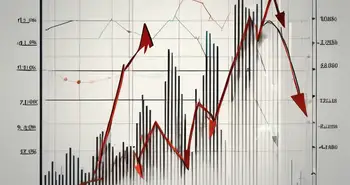A Comprehensive Guide to Scalping in Trading

In the fast-paced world of trading, there is a strategy that stands out for its quick and frequent trades: scalping. As an expert in trading, I am here to provide you with a comprehensive guide to understanding and implementing scalping techniques. Whether you are a beginner or an experienced trader, this article will equip you with the knowledge and tools necessary for successful scalping.
Understanding the Basics of Scalping
Scalping, in the realm of trading, refers to a strategy where traders aim to profit from small price movements by entering and exiting trades within short timeframes. It requires a keen eye for spotting opportunities and executing trades swiftly. This strategy is particularly popular in highly liquid markets, such as forex and stocks.
As an expert, I must stress the importance of understanding the definition and role of scalping in the trading world. Scalping is not a one-size-fits-all strategy and may not be suitable for everyone. It demands precision, discipline, and the ability to act swiftly in volatile market conditions.
When it comes to scalping, traders need to have a deep understanding of market dynamics and price action. They must be able to identify patterns and trends that can be exploited for quick profits. This requires constant monitoring of charts, indicators, and news events that can impact the market.
One of the key advantages of scalping is its potential for high profitability. By taking advantage of small price movements, scalpers can accumulate profits over multiple trades. However, it is important to note that scalping also carries a higher level of risk compared to other trading strategies. The fast-paced nature of scalping means that traders are exposed to sudden market fluctuations and increased transaction costs.
Successful scalpers often employ advanced trading tools and technology to enhance their decision-making process. They may use automated trading systems, algorithmic strategies, or specialized indicators to identify optimal entry and exit points. These tools can help scalpers execute trades with precision and efficiency, maximizing their chances of success.
Furthermore, scalping requires a high level of discipline and emotional control. Traders must be able to stick to their predetermined trading plan and avoid impulsive decisions. The fast-paced nature of scalping can be mentally and emotionally challenging, as traders need to make split-second decisions without hesitation.
It is also worth noting that scalping is not suitable for all types of traders. It requires a significant time commitment, as traders need to constantly monitor the market and execute trades. This can be demanding for individuals with limited availability or those who prefer a more relaxed trading approach.
In conclusion, scalping is a trading strategy that aims to profit from small price movements within short timeframes. It requires a combination of technical analysis skills, advanced trading tools, and emotional control. While it can be highly profitable, it also carries a higher level of risk and demands a significant time commitment. Traders considering scalping should thoroughly understand its dynamics and carefully assess whether it aligns with their trading goals and preferences.
The Principles of Scalping
To grasp the principles of scalping, you need to familiarize yourself with key concepts in this trading strategy. One such concept is the importance of timing. Scalping relies heavily on capturing short-lived price fluctuations, and being able to enter and exit trades at precisely the right moment is paramount.
Timing is not just about being quick, but also about being strategic. It involves analyzing various technical indicators, such as moving averages, support and resistance levels, and trend lines, to identify potential entry and exit points. By carefully studying these indicators, scalpers can increase their chances of making profitable trades.
However, timing alone is not enough to succeed in scalping. As an expert, I've found that successful scalping requires a deep understanding of market dynamics and the ability to quickly adapt to changing conditions. Markets are constantly influenced by a multitude of factors, including economic data releases, geopolitical events, and even social media trends.
Keeping up with the latest news and events is crucial for scalpers. By staying informed about relevant developments, you can anticipate potential market movements and adjust your trading strategy accordingly. For example, if there is a sudden announcement of an interest rate hike by a central bank, you may expect increased volatility in the currency markets, presenting potential scalping opportunities.
Furthermore, being aware of the overall market sentiment is essential for successful scalping. Sentiment refers to the collective feeling and perception of market participants towards a particular asset or market. By gauging sentiment through various means, such as analyzing social media sentiment analysis tools or monitoring market sentiment indicators, scalpers can gain valuable insights into the market's mood.
Scalping also requires a disciplined approach. It is important to set clear entry and exit rules and stick to them, even in the face of tempting opportunities. Emotions can easily cloud judgment in the fast-paced world of scalping, leading to impulsive and irrational decisions. By maintaining discipline, scalpers can avoid unnecessary losses and stay focused on their trading strategy.
In conclusion, scalping is a trading strategy that requires a combination of precise timing, market knowledge, adaptability, and discipline. By mastering these principles, scalpers can aim to profit from short-term price fluctuations in the markets they trade in. However, it is important to note that scalping is a high-risk strategy and may not be suitable for all traders. It requires a significant amount of practice, experience, and continuous learning to become consistently profitable in scalping.
The Pros and Cons of Scalping
Before delving further into scalping, it is important to consider the advantages and disadvantages of this trading strategy. Scalping offers the potential for quick profits and a high volume of trades, allowing traders to take advantage of small price movements. This strategy also enables traders to minimize their exposure to overnight market risks.
On the downside, scalping requires intense focus and discipline. It can be mentally and emotionally demanding, as traders need to make quick decisions under pressure. Additionally, transaction costs can accumulate due to the high number of trades conducted in a short span of time.
Tools and Techniques for Successful Scalping
To succeed in scalping, traders must utilize essential tools that enable them to efficiently execute trades. Platforms with advanced charting capabilities and real-time data are invaluable. It is also advisable to set up customized alerts to notify you of potential trading opportunities.
As an expert, I have discovered that effective scalping techniques involve the use of various strategies such as momentum trading, technical analysis, and pattern recognition. Experimenting with different approaches and fine-tuning your methods is crucial to finding what works best for you.
Risk Management in Scalping
With any trading strategy, risk management is of utmost importance. Scalping carries inherent risks due to the fast-paced nature of the trades. It is essential to understand and manage these risks effectively.
As an expert, I cannot stress enough the importance of developing a solid risk management strategy for scalping. This involves setting stop-loss orders, using appropriate position sizing, and maintaining strict discipline to avoid emotional decision-making.
FAQ
-
What is scalping in trading?
Scalping is a trading strategy that aims to profit from small price movements by entering and exiting trades within short timeframes.
-
What are the advantages of scalping?
The advantages of scalping include the potential for quick profits, the ability to minimize overnight market risks, and high trading volume.
-
Can anyone use scalping as a trading strategy?
While scalping can be profitable, it requires precision, discipline, and the ability to act swiftly in volatile market conditions. It may not be suitable for everyone.
In conclusion, scalping is a trading strategy that requires expertise, discipline, and a deep understanding of market dynamics. It offers the potential for quick profits but demands intense focus and the ability to make swift decisions. By utilizing essential tools, implementing effective techniques, and managing risks, traders can increase their chances of success in the exciting world of scalping.
Ready to take your scalping strategy to the next level? Discover the transformative power of Morpher, the revolutionary trading platform that leverages blockchain technology for a seamless, fee-free trading experience. With Morpher, you can enjoy the benefits of fractional investing, short selling without interest fees, and up to 10x leverage to amplify your trades. Experience the future of trading with Virtual Futures and the safety of a non-custodial Morpher Wallet. Sign Up and Get Your Free Sign Up Bonus today to join a global community of traders on a platform that's as fast-paced and dynamic as your scalping ambitions.

Disclaimer: All investments involve risk, and the past performance of a security, industry, sector, market, financial product, trading strategy, or individual’s trading does not guarantee future results or returns. Investors are fully responsible for any investment decisions they make. Such decisions should be based solely on an evaluation of their financial circumstances, investment objectives, risk tolerance, and liquidity needs. This post does not constitute investment advice.

Painless trading for everyone
Hundreds of markets all in one place - Apple, Bitcoin, Gold, Watches, NFTs, Sneakers and so much more.

Painless trading for everyone
Hundreds of markets all in one place - Apple, Bitcoin, Gold, Watches, NFTs, Sneakers and so much more.









